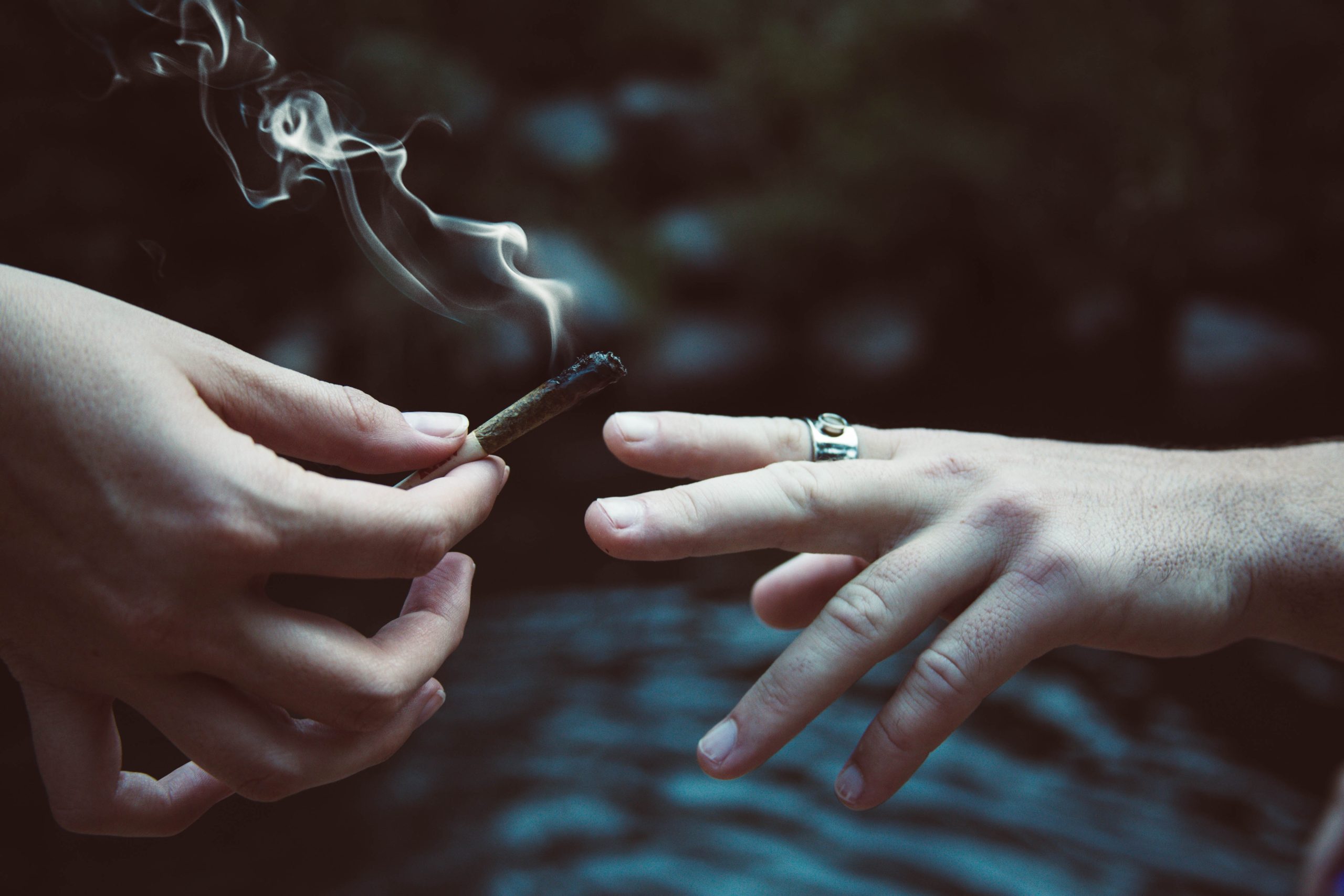You have heard about THC and CBD, the popular phytocannabinoids of the cannabis realm. But did you know that there is a world of other cannabinoids waiting for the same attention? These so-called “minor cannabinoids” may not have the same superstar power as their cousins, but they deserve their moment in the spotlight.
What are minor cannabinoids?
Minor cannabinoids are phytocannabinoids found in cannabis that are produced in smaller amounts. More than 100 minor cannabinoids have been found so far, and each one is believed to bring something unique to your cannabis experience.
Major vs. minor cannabinoids
The main factor that differentiates a major cannabinoid and a minor one is its abundance in the plant. Minor cannabinoids appear in quite low amounts in cannabis, often less than 1% of the total cannabinoid content.
However, these amounts can be increased when plants are selectively bred to contain higher amounts of a specific minor cannabinoid. For example, a breeder may want to produce a cultivar high in Cannabigerol (CBG) and may breed plants until a consistent, higher level of CBG is retained. Keep this low threshold in mind when evaluating cannabis flower’s cannabinoid content.
What we know about a cannabinoid also somewhat plays into its classification as major or minor. THC and CBD, the two cannabinoids that are widely considered “major cannabinoids,” are well-known both by the scientific community and cannabis consumers. Many minor cannabinoids that have been identified so far do not have that same notoriety, partly because some of them have not been researched to the same extent as THC and CBD. This dearth of research may be because a minor cannabinoid was only recently discovered, or it may be overshadowed by the scientific community’s interest in THC and CBD.
Get to know these 4 minor cannabinoids
1. THCV (Tetrahydrocannabivarin)
Tetrahydrocannabivarin, THCV for short, is a psychoactive cannabinoid. It’s strikingly similar to THC from a structural standpoint, but its origins in the plant differ. THCV is also less potent than THC.
This minor cannabinoid has been observed to have appetite-suppressing properties, quite the opposite of the “munchies” THC is so famous for driving. THCV may show promise in regulating blood sugar levels, but more research is needed before we fully understand THCV’s potential. THCV also exhibits anti-inflammatory properties. This minor cannabinoid was discovered in the early 1970s.
Potential effects:
- THCV may affect appetite
- THCV may affect blood sugar
- THCV may have anti-inflammatory effects
Common cultivars high in THCV:
- Durban Poison
- Cherry Pie
- GSC
Check out these products that contain THCV:
2. CBN (Cannabinol)
CBN, or cannabinol, has shown potential for relaxation promotion and for easing anxiety. It’s taken off in cannabis markets in New Jersey and elsewhere because it’s linked with sleep. If there’s a nighttime capsule or sleep gummy on the dispensary menu, there’s a high chance it contains CBN. It also has analgesic properties, which may make it helpful for chronic pain relief. CBN is intoxicating, like THC.
Even though it’s considered minor, CBN is the first discovered and isolated cannabinoid, all the way back in the 1930s and 1940s. This cannabinoid also doesn’t appear significantly when the plant is first harvested. It’s the result of degraded, oxidized THC — AKA old bud that’s been exposed to light and air.
Potential effects:
- CBN is associated with relaxation
- CBN may help with sleep
- CBN may help with chronic pain
Common cultivars high in CBN:
- Platinum Kush
- Green Crack
- Purple Cadillac
Check out these products that contain CBN:
- Ozone Grape Night 2:1 THC: CBN gummies
- Grӧn Blackberry Lemonade Pearls 1:1:1 THC:CBD:CBN
- Wana Optimal Stay Asleep Dream Berry Gummies 4:2:1:1 CBD:THC:CBN:CBG
3. CBG (Cannabigerol)
Cannabigerol, or CBG, has earned the nickname “the mother of all cannabinoids” because it’s the first compound to develop in cannabis. It’s the precursor to THC, CBD, and many other cannabinoids. CBG was discovered in 1964 to much fanfare, as its discovery was widely considered to be a “missing link” in explaining to the scientific community how THC is biosynthesized. Importantly, CBG is non-intoxicating, just like CBD.
Aside from its role in the development of other cannabinoids, CBG may have effects all its own. CBG has been researched for its anti-inflammatory effects, which can impact chronic pain and inflammation-related ailments such as inflammatory bowel disease (IBD). Other observed effects in research settings include antibacterial properties, appetite stimulation (hello, snacks), and the effect on eye health.
Potential effects:
- CBG may impact inflammation, which plays a role in several conditions
- CBG has been observed to have antibacterial properties
- CBG may give you the munchies
Common cultivars high in CBG:
- Super Glue
- Jack Frost
- Sour G
Check out these products that contain CBG:
- Ozone FX Balancing Blood Orange 2:1 CBG:THC
- Escape Artists Relief Cream 2:2:1 THC:CBD:CBG
- Grön Blueberry Lemonade Pearls 3:1 CBG:THC
4. CBC (Cannabichromene)
CBC, which stands for cannabichromene, was first discovered in the 1960s. Although it’s one of the more prominent cannabinoids, it’s less understood than many of its cousins. It’s not intoxicating like THC, but it may be many times more potent than CBD. Unlike any other cannabinoid on this list, CBC has been shown to interact with receptors outside of the endocannabinoid system (ECS), the network of receptors, compounds, and enzymes that’s the reason cannabis “works” in our minds and bodies.
Well, what do we know so far about CBC? This cannabinoid shows promise as an analgesic. It also has been observed to behave like an antidepressant in certain conditions. Similarly, it may have anxiolytic (anti-anxiety) properties.
Potential effects:
- CBC may affect inflammation
- CBC has been observed to behave like an antidepressant
- CBC may have anti-anxiety effects
Common cultivars high in CBC:
- Birthday Cake
- Charlotte’s Web
- Maui Dream
What about acidic cannabinoids?
If you see an “-A” following any of the cannabinoids you see in this list — or any of the major and minor cannabinoids — that’s the cannabinoid in its acidic form.
Acidic cannabinoids are how cannabinoids exist naturally in the plant before they’re exposed to heat. Lighting a match or putting cannabis in a vaporizer is a must for converting acidic cannabinoids into the active forms that affect our minds and bodies. This principle is why you won’t get high if you eat a fistful of cannabis flower.
Next time you shop for cannabis at Plainfield, N.J.’s Queen City, take a look at the label that comes with your flower or cannabis pre-rolls. This sticker details the cannabinoid content of the product you’re buying. Since the cannabinoids are not activated until you take them home and heat up, you’ll see each familiar cannabinoid listed as its acidic precursor.
What does it mean when a cultivar is high in a minor cannabinoid?
A minor cannabinoid can be considered high even at a comparably low percentage, like 1%. When shopping for products like edibles, however, you’ll see minor cannabinoids listed in milligrams as part of a serving size and the total package. If you’re looking to try THCV, CBN, or another minor cannabinoid, an edible may be an easier way to test out how these compounds affect you.
Shop cannabis that contains minor cannabinoids at Queen City
At Queen City, we’re all about supporting the local community and central New Jersey’s economy. That’s why we set out to offer a diverse array of cannabis products from dozens of brands. The goal is to match you with something new and interesting that helps you meet your cannabis consumption goals, whether that’s a bit more rest with CBN or just wanting to enjoy some good old-fashioned THC. Stop by our Plainfield, NJ dispensary seven days a week and ask one of our budtenders about the products and cultivars with minor cannabinoids that we have in stock.


